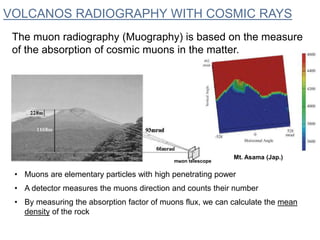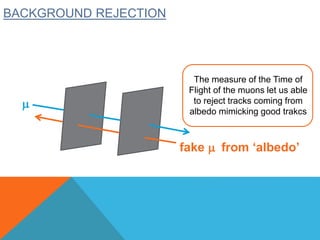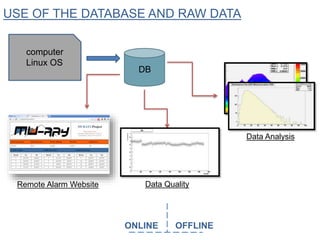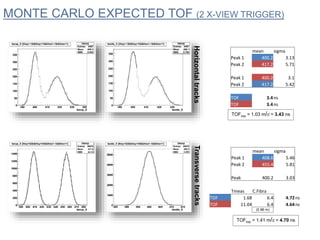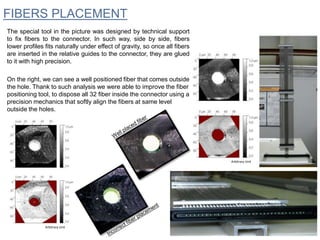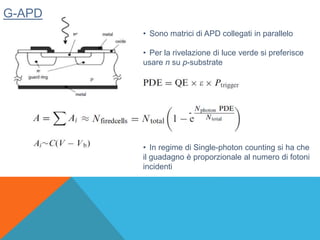1) The document describes the design, assembly, and commissioning of a muon telescope for imaging large structures using cosmic muons.
2) Key requirements for muonography include a rugged modular design, large detection area, high angular resolution, fast electronics, and high background rejection.
3) The MU-Ray telescope meets these requirements with 3 planes of plastic scintillator strips read out by silicon photomultipliers, achieving ~8 mrad angular resolution and 1 ns time resolution.
4) Commissioning tests validated the telescope's performance, and campaigns imaged Vesuvius volcano and Puy de Dome.

